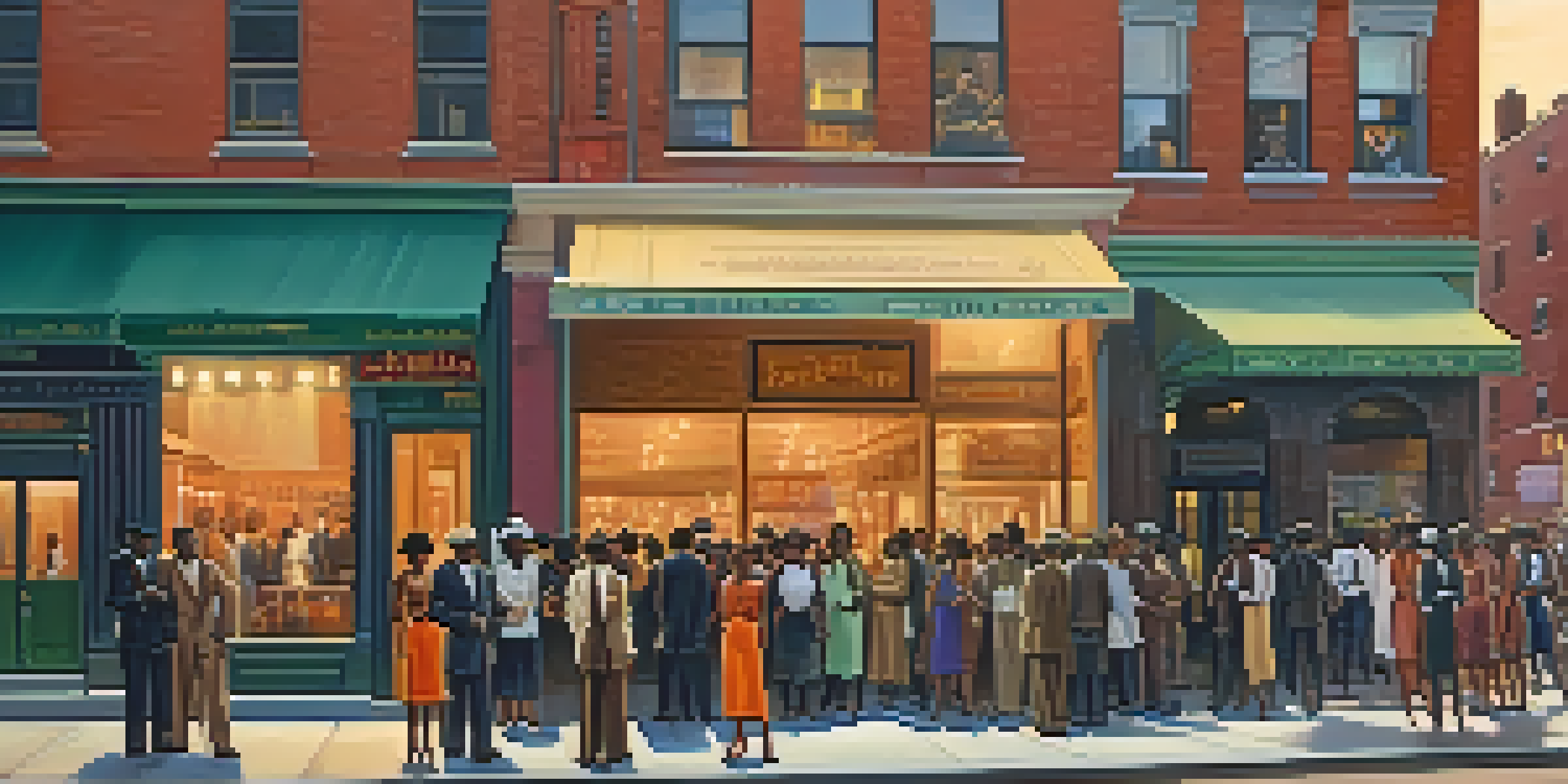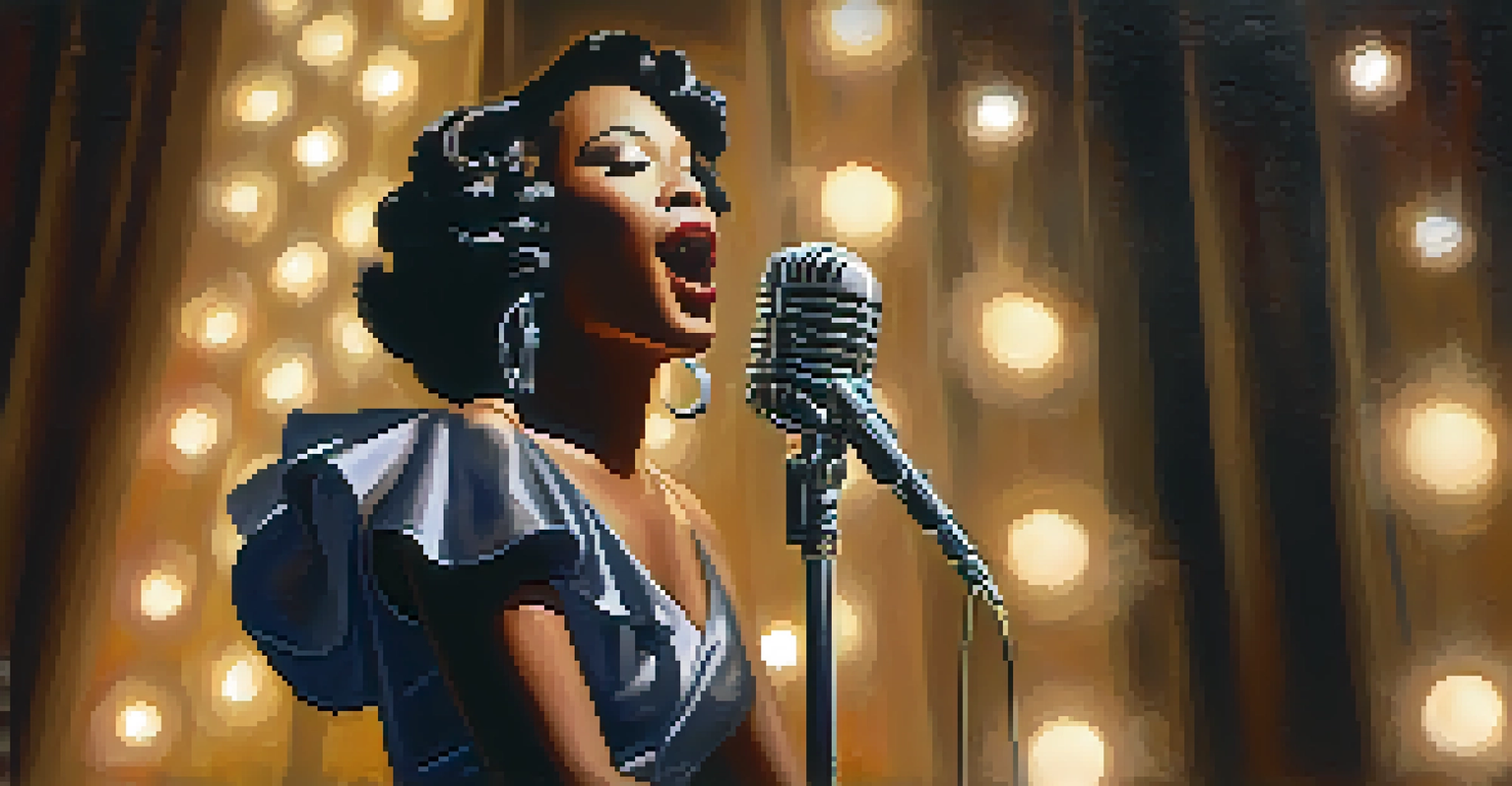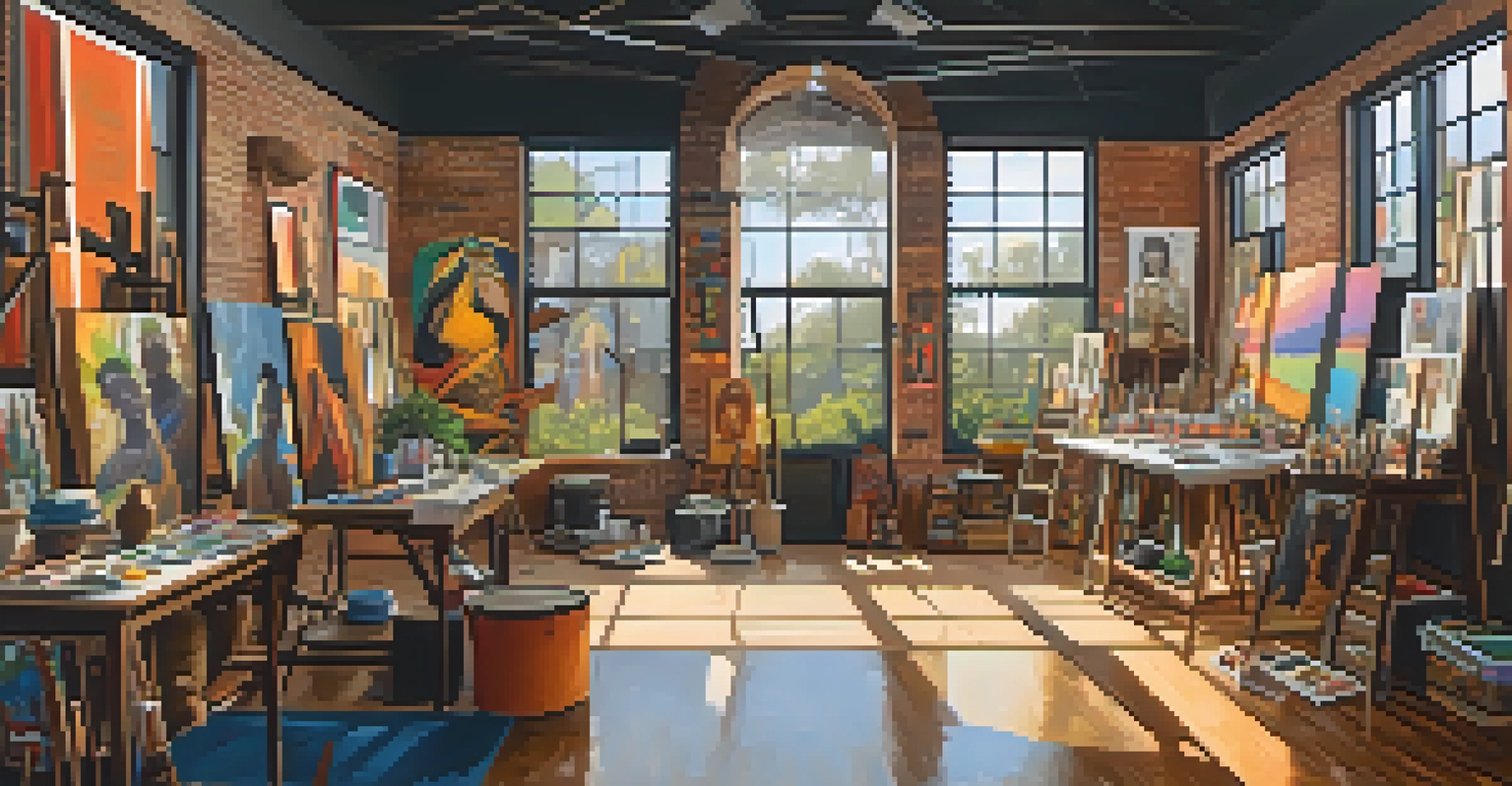The Harlem Renaissance: Cultural Revival in New York City

The Roots of the Harlem Renaissance: A Historical Overview
The Harlem Renaissance was a cultural explosion that took place primarily in the 1920s. It emerged from the Great Migration, where many African Americans moved to northern cities, seeking better opportunities. This influx of talent and creativity laid the groundwork for a vibrant artistic community in Harlem, New York City.
The Negro artist and the racial mountain.
Historically, this period was marked by a struggle for civil rights and social equality. As African Americans began to express their identities and experiences through art, literature, and music, they challenged the prevailing racial stereotypes. The cultural revival was not just an artistic movement; it was a statement of identity and resilience.
With key figures like Langston Hughes and Zora Neale Hurston, the Renaissance showcased the richness of African American culture. Their works captured the spirit of the time, reflecting both the joys and the struggles of black life in America. Thus, the Harlem Renaissance set the stage for future generations of artists and activists.
Key Figures: Artists Who Shaped the Harlem Renaissance
The Harlem Renaissance was defined by a roster of influential figures whose works continue to resonate today. Writers like Langston Hughes and Claude McKay used poetry and prose to explore themes of identity, race, and social justice. Their powerful narratives gave voice to the African American experience and inspired countless others.

Musicians also played a pivotal role in this cultural revival. Jazz became the soundtrack of the Renaissance, with artists like Duke Ellington and Louis Armstrong pushing musical boundaries. Their innovative sounds not only entertained but also reflected the complexities of urban black life.
Cultural Explosion in Harlem
The Harlem Renaissance was a vibrant cultural movement in the 1920s, fueled by the Great Migration and a quest for identity and expression among African Americans.
Visual artists like Aaron Douglas and Augusta Savage contributed to the movement by incorporating African heritage into their works. Their art celebrated black identity while confronting societal issues. Together, these artists created a rich tapestry that showcased the diversity of experiences within the African American community.
Literature: The Heartbeat of the Harlem Renaissance
Literature was a cornerstone of the Harlem Renaissance, serving as a powerful medium for expression. The period saw the emergence of a distinctive African American literary voice, with writers exploring themes of race, identity, and social justice. This literary movement not only highlighted the struggles faced by black Americans but also celebrated their achievements.
There are years that ask questions and years that answer.
Poetry, in particular, became a popular form of expression. Langston Hughes’s work, characterized by its jazz rhythms, captured the essence of the black experience. His famous poem 'The Negro Speaks of Rivers' reflects the deep connections between heritage and identity, resonating with readers across generations.
Novels and essays also flourished during this time, with authors like Nella Larsen and James Weldon Johnson delving into complex social issues. Through their storytelling, they painted a vivid picture of life in Harlem, inspiring readers to confront their perceptions of race and culture. This literary explosion laid the groundwork for future African American literature.
Music: The Soul of the Harlem Renaissance
Music was integral to the Harlem Renaissance, serving as a unifying force that transcended racial barriers. Jazz, in particular, exploded in popularity during this era, with Harlem becoming a hub for this new genre. The lively rhythms and improvisational style of jazz mirrored the vibrant energy of the community.
Clubs like the Cotton Club and the Apollo Theater became iconic venues where black musicians performed for diverse audiences. Legendary artists like Billie Holiday and Duke Ellington graced these stages, captivating listeners with their talent. These performances not only entertained but also challenged societal norms about race and music.
Influential Artists and Their Impact
Key figures like Langston Hughes, Duke Ellington, and Zora Neale Hurston shaped the Renaissance through their innovative works in literature, music, and visual arts.
The influence of jazz extended beyond entertainment; it became a cultural movement that inspired countless artists. Its improvisational nature encouraged creativity and self-expression, reflecting the spirit of the Harlem Renaissance. Ultimately, music became a powerful vehicle for social change and cultural pride.
Visual Arts: Capturing the Essence of the Renaissance
Visual arts flourished during the Harlem Renaissance, with artists embracing themes of racial identity and heritage. Painters like Aaron Douglas blended African motifs with modernist techniques, creating works that celebrated black culture. His art not only depicted the beauty of African American life but also addressed social issues.
Sculptors like Augusta Savage also made significant contributions, using their art to advocate for social change. Savage’s famous sculpture, 'The Harp,' symbolized the struggles and aspirations of African Americans. Through their creations, visual artists captured the essence of the Renaissance, reflecting the community's hopes and dreams.
Exhibitions and galleries showcased these artists, providing a platform for their work. The Harlem Community Art Center became a vital space for artistic exchange and collaboration. This visual arts movement, alongside literature and music, solidified the Harlem Renaissance as a transformative period in American history.
The Role of Women in the Harlem Renaissance
Women played a pivotal role in the Harlem Renaissance, contributing significantly to its cultural output. Writers like Zora Neale Hurston and Nella Larsen explored the complexities of black womanhood through their stories. Their works highlighted both the struggles and triumphs of African American women, challenging societal norms and stereotypes.
In the realm of music, female artists like Billie Holiday and Bessie Smith became icons, using their voices to address issues of love, loss, and resilience. Their emotional performances resonated with audiences, showcasing the depth of black women's experiences. These women not only entertained but also inspired social change through their art.
Lasting Legacy of the Movement
The Harlem Renaissance significantly influenced American culture, paving the way for future civil rights movements and inspiring contemporary artists to explore themes of identity and heritage.
Moreover, organizations like the National Association of Colored Women (NACW) provided platforms for women's voices during this era. These women fought for civil rights and social justice, emphasizing the importance of their contributions to the broader movement. Their efforts ensured that the legacy of women in the Harlem Renaissance would be remembered and celebrated.
Legacy of the Harlem Renaissance: Lasting Impact on Culture
The Harlem Renaissance left an indelible mark on American culture, influencing generations of artists and thinkers. Its celebration of African American identity paved the way for future movements, such as the Civil Rights Movement and the Black Arts Movement. The cultural explosion of the Renaissance inspired artists to explore their heritage and express their experiences.
Moreover, the themes explored during this period continue to resonate in contemporary art and literature. Writers and musicians today draw inspiration from the works of Harlem Renaissance figures, ensuring that their messages endure. The Renaissance's emphasis on self-expression and cultural pride has become a cornerstone of African American artistic identity.

In essence, the Harlem Renaissance was not just a fleeting moment in history; it was a cultural awakening that shaped the narrative of black America. Its legacy is evident in the ongoing fight for equality and representation in the arts. As we reflect on this vibrant period, we recognize its profound influence on our collective cultural landscape.